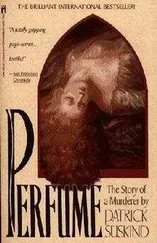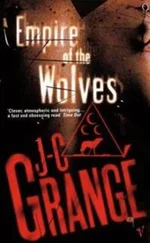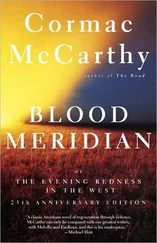Zachary Lazar
Evening's Empire: The Story of My Father's Murder
To my mother and Stacey and Richard
My God, my God, why hast thou forsaken me?
Why art thou so far from helping me; and from
The words of my roaring?
— Psalm 22
In the fall of 1996, a few days after my wedding, an article about my father appeared in the Arizona Republic , an updating of the old, unhappy story:
The men from Chicago were efficient.
In the shadowy stairwell of the parking garage on North Central Avenue, they placed four.22-caliber shots into the chest of accountant Ed Lazar and one into the back of his head.
They then partially unscrewed a light bulb near the door and disabled a fluorescent fixture, throwing the area into total darkness.
It was hours before police found the body Feb. 19, 1975. It was two decades before they found out who killed Lazar and why.
On Tuesday, they revealed the truth, along with information about a string of murders in Phoenix that they know or suspect was carried out by Chicago mob killers.
That information, among other things, throws new light on the murder of Arizona Republic reporter Don Bolles in 1976.
Phoenix police said that Ned Warren, Sr., then the king of Arizona land fraud, ordered the hit on Lazar, his bookkeeper and business partner.
They said John Harvey Adamson, the chief assassin in the Bolles killing, finally told police a year ago that Warren had ordered the hit on Lazar.
Adamson did not take part in the contract on Lazar, police said.
The killers who did take the contract, two Chicago Mafia hit men, murdered Lazar the day before he was to testify in front of a Maricopa County grand jury about Warren’s bogus real-estate deals, in which millions of dollars were swindled from thousands of investors.
“He was going to name Ned Warren as the godfather of land fraud in Arizona,” said Sgt. Mike Torres, a Phoenix police spokesman. “Ned Warren was the natural suspect, but there was no one to give him up.”
Warren was eventually convicted of fraud and bribery and died in prison in 1980.
… “Ned Warren went to Adamson and asked him to kill three people; Lazar, (Arizona Real Estate Commissioner) J. Fred Talley and a third person whose name he could not remember,” Torres said.
… Talley, who said he issued real-estate licenses to convicted felons, was suspended amid an investigation into whether he helped Warren in his activities.
Talley later retired and died of a heart attack.
The new information about the Lazar killing and the plan to kill Talley recalls a lurid period in Arizona’s history — the late 1960s and 1970s — when land-fraud artists roamed the state in sharp suits, gouging money from buyers and investors across the country and the world.
— Arizona Republic,
October 2, 1996

Ninety miles north of Phoenix, in Yavapai County, Arizona, is a large subdivision of mobile homes and small, single-story houses called Verde Lakes. The land once belonged to a sprawling ranch, dating back to the late nineteenth century, when the nearby town of Camp Verde had been established to fend off raids from the Yavapai and Apache tribes that had lived for generations in that region. In the summer of 1969—the summer of the moon landing — my father, Edward Lazar, and his business partner, Ned Warren, Sr., financed a down payment on this land with a loan from a London-born entrepreneur named David Rich. They paid this money into a trust, and the company they formed, Consolidated Mortgage Corporation, hired crews to remake the ranch house into a clubhouse, to excavate a small lake where there had been none, to bring in breeding pairs of ducks, and to plant three-inch-high sapling trees. They did not build houses on the land, nor did they intend to. Verde Lakes existed as a possibility. As a fact, it was empty desert divided on a map into quarter acre lots. The plan was to retail hundreds of these lots to small-scale investors, many of them nearing retirement, who would build their own houses there or resell the land once its value rose. The company hired Cesar Romero, the actor most famous for playing the Joker on TV’s Batman, as a public relations spokesman. They installed roads and utilities and water lines for homes that did not yet exist. They did all of this on credit, soliciting capital from banks, corporations, and private investors throughout the country, using as collateral and sometimes selling as securities the mortgages on the lots sold by the company’s salesmen. For a brief while, my father was a paper millionaire. For a much longer time, he was in financial crisis. At one point, he and his partner, Warren, were personally $2 million in debt. When my father got out of the land business in 1973, he had nothing to show for his four years of struggle. I was five years old then. He was a devoted father according to everyone I’ve talked to, though I have almost no memories of him that I can feel certain are true and not the kind suggested by photographs.
On the CBS Evening News of February 21, 1975, Walter Cronkite appeared seated before a map of Arizona to deliver a story about my father and his business partner, Ned Warren, Sr. “Thousands of investors, many among those who could least afford it, have bought Arizona’s land worth far less than they paid for it,” Cronkite read. “The multimillion-dollar fraud is under investigation, but now there’s a startling new development — a gangland style murder.”
Cronkite looked down at his cue card before reading the last phrase, as if the word gangland, pronounced by Cronkite as gang-lund, could not be said without a slight pause to distance himself from its tabloid crudeness.
There was a shot of a stretcher being rolled toward an ambulance, an ambulance that to our eyes now looks like a large station wagon or a hearse. The body on the stretcher, covered with a blanket from foot to head, was identified by the on-scene reporter in the clipped style of a newsreel: “The victim, Edward Lazar, found in a Phoenix garage Wednesday with five bullets in his body.”
The two homicide detectives in their sport coats collapsed the stretcher and pushed it into the ambulance. There was an image now of a press photo of my father’s face. The cameramen had positioned the photo on a bed of fabric so that, with this border, the picture could fit the dimensions of a TV screen. It was black and white — all of this footage was in black and white. When you watch it now, it has the unreal quality of a crime movie trying to capture a “period.”
My father looked eager and shrewd in the photograph. He was still in his early thirties when it was taken. His eyes penetrated the frame, as if he could easily and accurately read the gaze of whoever might be looking back at him. His dark hair was short and his lips were parted, not in a smile, but as if to say something precise and illuminating in the midst of a dispute.
The reporter continued: “Lazar was scheduled to appear yesterday before a grand jury investigating sales of virtually worthless land for as much as four hundred million dollars. Lazar’s testimony was expected to focus on his onetime business associate, Ned Warren, Sr., a mysterious figure widely known in Arizona as ‘the Godfather of Land Fraud.’ ”
That phrase, “the Godfather of Land Fraud,” had bedeviled my father for at least five months before his death, since Warren’s first indictment. It had started as a joke — two or three years before, someone had given Warren a birthday present of director’s chairs printed with the words The Godfather on the backs — but now the joke had become an epithet in dozens of newspaper stories written about Warren, often containing a reference to his prison record, his land “swindles,” and, most recently, the payments that he, along with my father and other associates, had made to government officials. The word Godfather now chimed with the word gangland to produce Mafia.
Читать дальше













